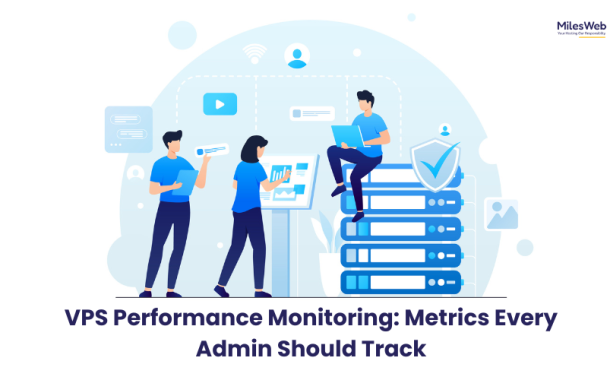If you’re exploring VPS website hosting, you’ll learn quickly that specifications are only the beginning. You could have a VPS with ample RAM and multiple cores, but a backup running during peak traffic or a plugin consuming memory excessively quietly can negatively impact the experience. That’s why anyone who buy Windows VPS server soon realizes that daily monitoring, spotting usage patterns, and addressing small issues early are key to keeping performance smooth.
Table of Contents
CPU Usage: Hidden Performance Bottleneck
CPU usage problems can occur subtly, without immediately affecting server performance. You might see a small spike occasionally, dismiss it, and then one day the server freezes under load. Scripts, plugins, and scheduled tasks often use CPU quietly, in ways you might not notice.
Checking the CPU over days or weeks shows patterns. You’ll notice a report running at 3 a.m. that slows things down or a plugin that spikes usage during high traffic. Once noticed, you can reschedule tasks, optimize scripts, or limit heavy plugins. The CPU becomes more predictable, and it becomes clear why performance slows at times.
Memory: The Silent Pressure Point
RAM usage doesn’t spike all at once—it gradually increases over time. A plugin leaks memory. A script runs repeatedly. Swap memory gets used, performance drops, and no one sees it until users complain.
Watching memory trends over time helps you catch slow leaks before they turn into bigger problems. You see which scripts or plugins constantly consume resources. Then you can reschedule tasks, tweak scripts, or just give the server more breathing room. Doing this proactively keeps the VPS from slowing down unexpectedly overnight.
Disk Performance: Quiet but Critical
Disk issues are subtle. You may have plenty of free space, but slow read/write speeds can bottleneck databases and caching. Sometimes it’s a backup running at the wrong time, or a log that’s grown bigger than expected.
Monitoring disk activity shows these hidden slowdowns. You can move backups to off-peak hours, trim logs, or optimize database operations. Most of the time, VPSs hang because someone ignored an expanding 5GB log file—small details matter. Disk health might not be flashy, but it affects almost everything your server does.
Security and Performance: Two Sides of the Same Coin
Sometimes those odd CPU spikes or strange network blips aren’t performance bugs — they’re warning signs. A script running where it shouldn’t, or someone testing your firewall, can quietly drain resources and slow things down.
Keep an eye on login logs, firewall reports, and open ports. They tell you more than most people realize. Security and performance always move together — if one slips, the other follows. Spotting the problem early saves hours of cleanup later.
Network Flow: When Performance Drops
Even if your CPU, memory, and disk look perfect, your VPS can still feel slow. In many cases, the network is often the source of the slowdown. A sudden delay, dropped packets, or uneven bandwidth can quietly disrupt how visitors experience your website.
We’ve seen this happen countless times: a website seems fine, then suddenly a group of traffic stalls because a route is misconfigured or someone’s hammering the server with repeated login attempts. Monitoring traffic and errors helps catch these problems early, before users start complaining. Network issues often go unnoticed—you usually notice them when someone messages you about a slow page. Tracking these patterns early can save you from bigger problems later.
Applications and Databases: The Real Resource Drains
Most performance slowdowns don’t come from substandard hardware. A poorly optimized SQL query or a misbehaving plugin can quietly consume resources until the VPS begins to slow noticeably.
With MilesWeb VPS hosting, you can quickly spot which apps or processes are causing issues. Once you know, you can tweak code, reschedule tasks, or limit plugins. A small adjustment can make the VPS feel incredibly faster.
Logs, Alerts, and Daily Check-ins: Your Secret Weapon
Logs are tedious, but they tell the truth. Every failed query, slow script, and network hiccup leaves a trace. Skipping them is like ignoring the “check engine” light on your car.
Combine logs with alerts and dashboards (with MilesWeb, this is painless), and you create a proactive system. When CPU, memory, or network spikes appear, you can spot them and fix the problem before anyone notices slowdowns.
Concluding Insights
A VPS isn’t just a server—it’s a living system. CPU behavior, memory usage, disk activity, network flow, application load, security, backups—all of it contributes to smooth performance.
Active, human monitoring is what makes it truly reliable. Providers like MilesWeb make dashboards and alerts easy, but nothing replaces proactive monitoring. When you catch small issues early, anticipate patterns, and adjust resources proactively, the VPS hums along seamlessly. Visitors get a fast, reliable, and stable experience, thanks to all the behind-the-scenes work.














